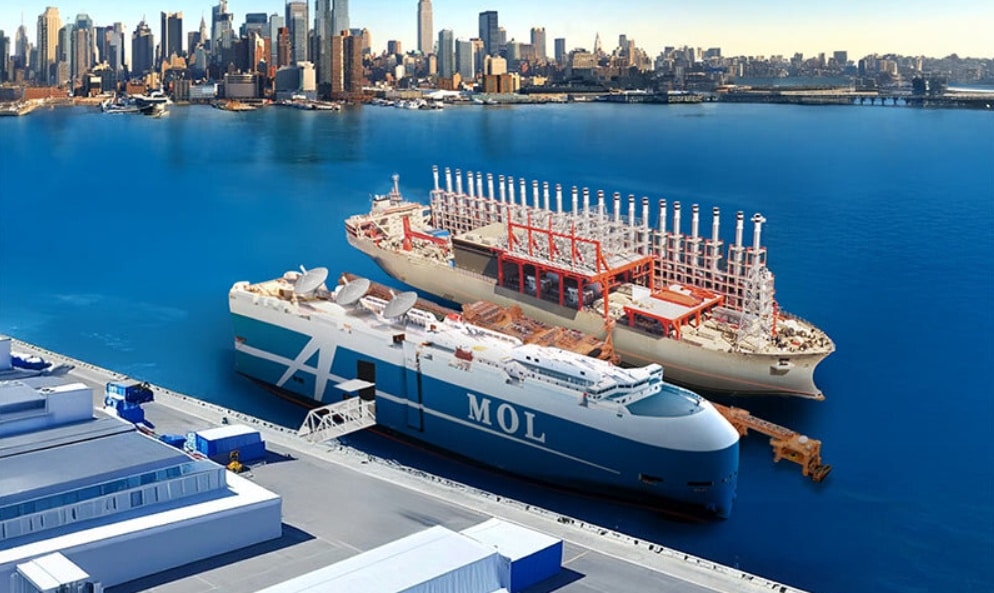Floating data centres become a new segment for shipping to pursue
Floating Data Centers: A Maritime Solution to Growing Demand

The surge in global data processing and storage needs is driving innovation in the tech industry. As land-based infrastructure faces increasing limitations, floating data centers are emerging as a viable alternative. These unique facilities, built on barges or repurposed ships, offer cost-effective deployment and relieve pressure on terrestrial resources.
Pioneering Efforts and Innovative Projects
Nautilus Data Technologies has been at the forefront of this trend since launching the Stockton 1 barge in 2021, stationed in California’s San Joaquin River. This floating data center operates with 7 megawatts (MW) of IT capacity and utilizes natural water cooling to enhance efficiency. The company is also developing a second facility in Ireland. Meanwhile, other nations are testing their own floating solutions. China is working on the Hainan Underwater Intelligent Computing Centre, while France introduced the Denv-R 100kW solar-powered floater in 2023.
The momentum in this sector is accelerating. In July, Mitsui OSK Lines (MOL) partnered with Karpowership’s Kinetics initiative to create a large-scale floating data center expected to be operational by 2027. This project plans to retrofit a 120-meter car carrier into a platform capable of delivering between 20MW and 73MW of capacity using direct seawater cooling. Additionally, a collaborative demonstration barge project is underway involving Japan’s NYK, NTT Facilities, Eurus Energy, MUFG Bank, and Yokohama city at the Osanbashi pier. Both Russia and China are also exploring similar pilot projects, reflecting a growing global interest in maritime data solutions.
Advantages of Maritime Data Centers
Floating data centers present several compelling advantages. Firstly, their flexibility allows them to be deployed at any port with sufficient power and fiber connectivity. This is especially crucial for densely populated or island nations like Japan and Singapore, where acquiring land for traditional data centers is prohibitively expensive. Secondly, these maritime facilities can mitigate water usage issues. Conventional data centers in the United States consume around 1.7 billion liters of water daily, often in drought-affected regions. By utilizing seawater or river water, floating data centers can alleviate fresh water stress. Furthermore, hybrid cooling systems, such as those based on liquefied natural gas (LNG), offer additional benefits. Lastly, repurposing older vessels such as car carriers into data centers not only reduces costs but also promotes asset reuse.
ABS Launches Pioneering Global Electrification Center to Support Maritime’s Net-Zero Transition
The potential demand for data center capacity is staggering. According to McKinsey, global data center capacity could grow by 19% to 22% annually, potentially reaching between 171GW and 219GW by 2030, up from the current 60GW. This growth would necessitate more capacity being built in six years than in the previous two decades combined. Investment in this sector is also on the rise, projected to increase from $223 billion in 2022 to $406 billion by 2025, as reported by Statista.
However, a critical question remains: can floating data centers effectively meet this burgeoning demand? Analysis from Splash Extra indicates that over 600 converted vessels would be needed to match the capacity of the largest onshore data centers. As of now, no operational floating data center exists on a converted commercial vessel, but MOL’s upcoming project could change this landscape by 2027.
With the average onshore data center occupying around 100,000 square meters and more than 11,800 such facilities currently in operation, the potential for maritime data centers is significant. Given the combination of escalating demand, rising land costs, and increasing environmental pressures, the success of early projects could usher in a new wave of ship conversions, providing essential cloud infrastructure from rivers and ports.
